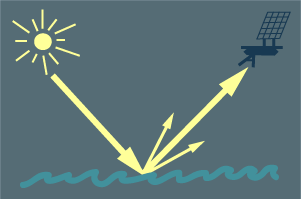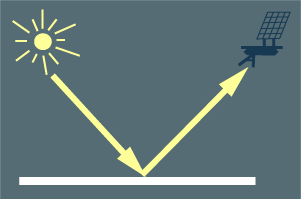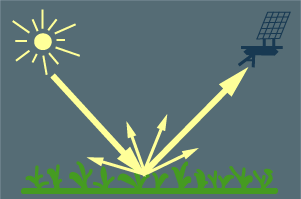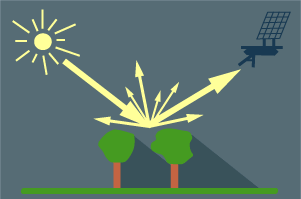|
||||
| The BRDF is the "Bidirectional Reflectance Distribution Function". It gives the reflectance of a target as
a function of illumination geometry and viewing geometry. The BRDF
depends on wavelength and is determined by the structural and optical
properties of the surface, such as shadow-casting, mutiple scattering,
mutual shadowing, transmission, reflection, absorption and emission
by surface elements, facet orientation distribution and facet density. |
||||
Bidirectional reflectance distribution functions: causes |
||||
|
|
 |
|||
| 1 - Mirror
BRDF: specular reflectance |
2 - Rough water
surface BRDF: sunglint reflectance |
|||
|
|
|
|||
| 3 - Volume scattering BRDF: leaf/vegetation reflectance | 4 - Gap-driven BRDF (forest): shadow-driven reflectance | |||
|
Source: Lucht et al. (2000) |
||||
|
|
||||
| back to top |
||||


